shipworm or teredo worm
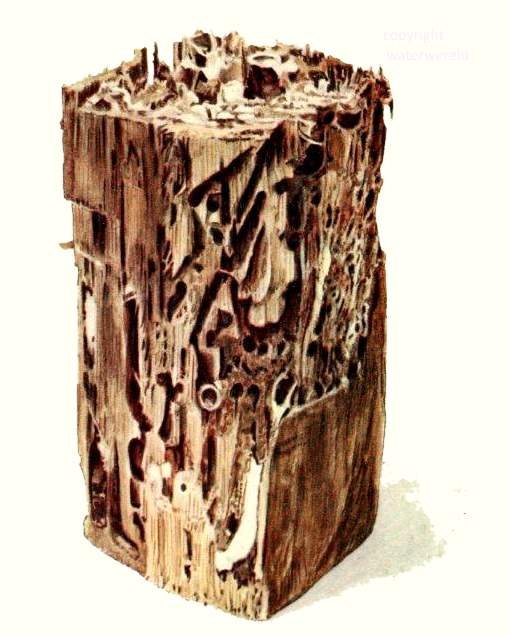
Immersed in seawater this piece of wood is completely hollowed by the work of some Teredo worms. Teredo worms never enter the tunnel of another worm. The tunnels are covered with a very thin chalky layer. The hulls of wooden ships were protected with tar and creosoot against the shipworm. But the jetties, piers and other wooden sea structures were terrible damaged by the activities of the shipworm. In the 18th and 19th century the shipworm causes extensive and cstly damage to unprotected wooden structures. Nowadays the shipworm is important for shipwracks of wooden ships.
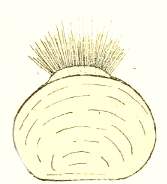
A teredo navalis pediveliger larva is about 1 mm long and is a free swimming plankton animal. It is attracted by the wood smell and attaches itself with an byssus thread to the wooden surface. It then covers itself with wooden and sand particles. Soon it changes dramatically: the hairs dissapear and a foot develop. This small larva bores itself into the wood: it use two small shells on its anterior surface to rasp itself a tunnel in the wood. The wood partiles are consumed by commensale bacteria.
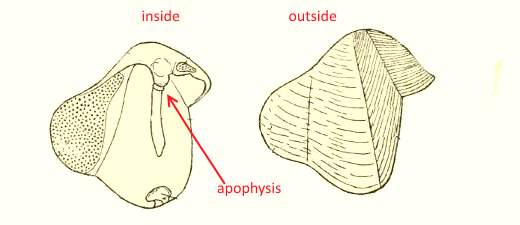
The two small shells of the teredo worm are used to rasp the wood. Muscles are attached to these small shells.
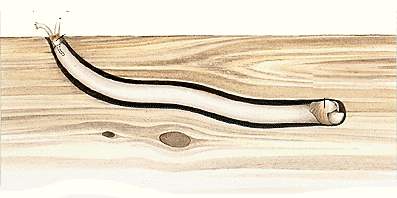
The two siphons protrude from the posterior end of the clam. They are protected by two

The shipworm in its tunnel.
1 chalky lineage of the tunnel
2 shell
3 fold of the worm used for gripping the wood
4 shell , used as a dent
5 foot of the bivalve

The teredoworm uses two siphons.
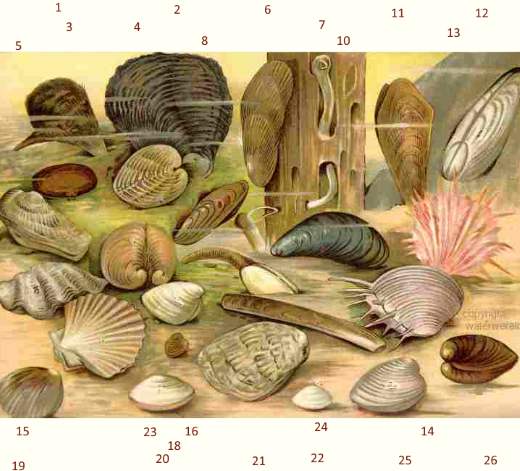
Shells from the North sea and Baltic sea, an illustration from 1916
1 Avicula, Indian ocean
2 Black-Lip Pearl Oyster or Pinctada margaritifera
3 Astarta
4 cockel or Cardium edule, Cerastoderma edule
5 ark clam or Barbatia barbata
6 Modiola, Mediterranean Sea
7 shipworm or teredo worm or Teredo navalis
8 date shells or date mussels or Lithophaga lithophaga
9 Oxhorn-Cockle or Isocardia Cor,
10 mussel
11 noble pen shell or fan mussel or Pinna nobilis, Mediterranean sea
12 Common Piddock or Pholas dactylus
13 Spondylus gaedoropus
14 venus clam or Cytherea Dione
15 The giant clam or Tridacna gigas, Indian oceaan
16 surf clam or Spisula solida
17 scallop or pecten maximus
18 Nucula nitidosa
19 Comb Bittersweet Clam or Tucetona pectunculus
20 Tellina virgata
21 oyster or Ostrea Edibilis
22 peppery furrow shell or Scrobicularia plana
23 blunt gaper or Mya truncata
24 razor shell or Ensis arcuatus
25 striped venus or Chamelea striatula
26 Lucina pectinata

Bivalves of the Northsea and baltic sea, printed in 1905, München. J.F. Lehmanns Verlag, as an illustration for "Der Strandwanderer" by P. Kuckuck.
1 European Flat Oyster, Mud Oyster or Edible Oyster or Ostrea edulis
2 Queen Scallop or Pecten opercularis
3 Blue Mussel or Mytilus edulis
4 Common Cockle or Cardium edule
5 Ocean Quahog or Cyprina islandica
6 Venus Clam or Venus gallina
7 Trough-shell or Mactra solida
8 White Furrow Shell or Scrobicularia alba
9 Banded Wedge-shell or Donax vittatus
10 Baltic Macoma, Baltic Clam or Baltic Tellin or Tellina baltica
11 Sword Razor Shell or Solen ensis
12 Soft-shell Clam or Mya arenaria
13 Common Piddock or Pholas dactylus
14 Shipworm ,Teredo worm or Teredo navalis